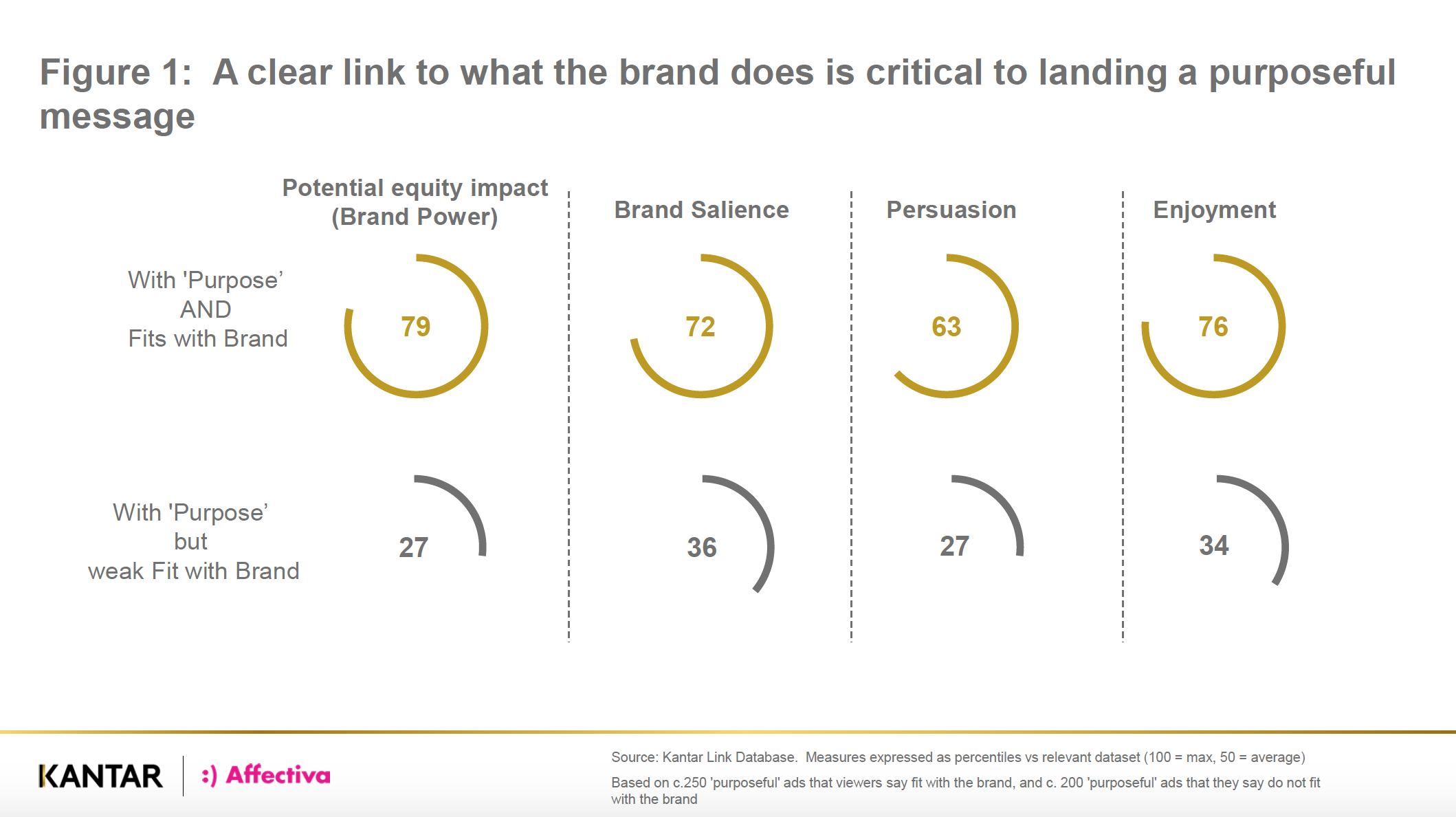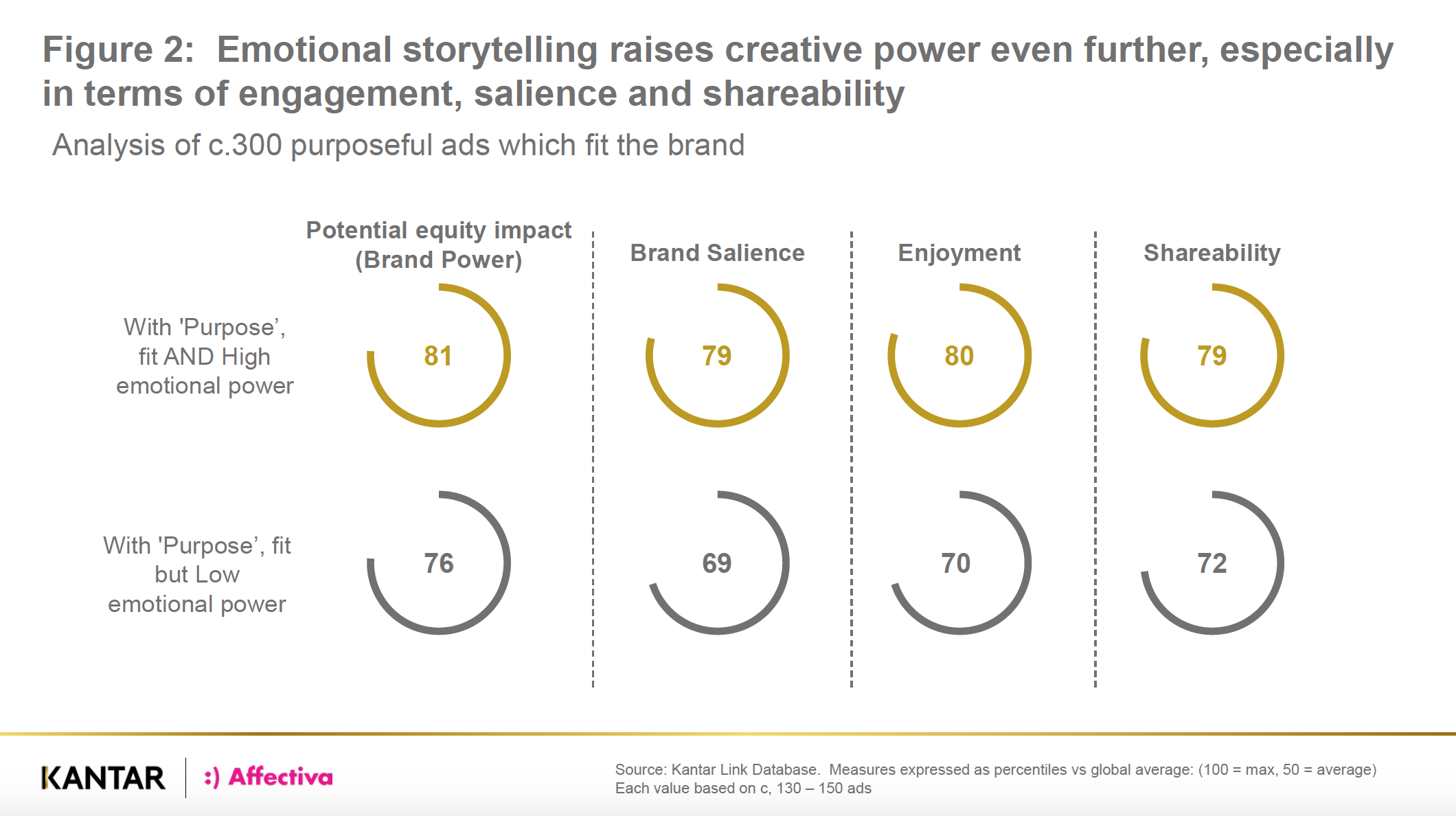Consumers may value companies that champion a purpose, but they’re also rightly suspicious of it. Creating a successful purpose - led advertising campaign is not as straightforward as simply showcasing your aspirations, or aligning to a cause. Many such campaigns are either ignored, or create a backlash for the brand. So–how can brands truly benefit from the emotional power of a purposeful positioning?
Affectiva’s Global Managing Director of Media Analytics, Graham Page, shared evidence of what we know works well based on analysis of consumer responses, from the Kantar and Affectiva collective dataset of over 48,000 ads. During his Emotion AI Summit 2019 presentation, Graham explains how to navigate your brand towards successful purpose-driven advertising.
What is Brand Purpose?
Brand purpose is one of the most debated topics in the marketing industry. In fact, “Brand Purpose” was voted by the Association of National Advertisers in the US as their number one marketing word of 2018. Many brand owners have realized that consumer standards have changed, and they expect brands to go beyond meeting a functional need, and to have a more positive influence on society. As a result, many brands are defining their purpose and building this into their brand messaging.
Patagonia is a brand that's often cited in this context. It's a brand that's got deep ethical credentials. It's donated huge amounts of its profits worldwide to ethical causes. Many brands are taking this approach, and there's a lot of evidence that not only is good ethical practice the right thing to do, but it's also good for business as well.
While he was still working at Kantar, Graham developed a report in 2018 compiling the evidence for the power of brand purpose. It showed some pretty simple yet powerful things. For instance, it showed that the majority of consumers say that they're more likely to buy brands that stand for something and have a cause that goes beyond just what they do. They also found that the hard financial value of a brand increases by over 200% if it is seen as doing broader good than simply just meeting needs.
So how can brands approach purpose-driven advertising? Some of the data collected between Affectiva and Kantar sheds some interesting light on how best to land an ethical message.
How it works: Using Emotion AI to Understand Brand Content
Kantar and Affectiva use Emotion AI technology to help clients develop better advertising through pre-testing. The Kantar Link methodology involves showing people a commercial before it goes to air, asking a structured questionnaire which includes both implicit and explicit measures, to understand how people are likely to react in-market. In addition, with their consent, participants are recorded while they watch the ad, and Affectiva's Emotion AI technology is then used to understand frame-by frame the emotional and cognitive responses that viewers had in the moment. Our technology uses machine learning algorithms to code a wide variety of expressions viewers show while they watch content, which allows us to assess many emotional and cognitive states, which are interpreted in the context of the specific content. Together, this integrated approach gives a clear read on both type 1 and type 2 consumer responses to campaigns.
There's a huge repository of data that Kantar and Affectiva have between them. To date, Kantar and Affectiva have collectively researched over 48,000 ads in 87 countries, which has video. To investigate the best way to land a brand purpose campaign, we took approximately 20,000 ads from that database and split them into two groups. One group consisted of ads that advertised wider brand purpose–such as a message around corporate social responsibility or environmental responsibility, and the other group comprised ads that did not. We then looked at the difference in responses that consumers gave us to those ads across a number of different dimensions, to understand if “purposeful” campaigns are more effective, and why.
Perhaps surprisingly, we found that ads which have a “purposeful” message are no more effective, on average, than any other ad. This seems odd–given more consumer interest in brands ethical contribution, why aren’t such campaigns more emotionally compelling? Digging deeper, we found that one key reason seemed to be that in many cases, viewers simply couldn’t understand why the brand was talking about their claimed purpose. In contrast, when it’s clear how the brand contributes to addressing a social tension and the message seemed authentic– ad effectiveness rocketed. Figure 1 below shows the average performance of purposeful ads, split into ads where consumers said the fit between the ad and the brand was clear, and those where they did not. Across a wide variety of measures, a strong brand fit boosted effectiveness enormously.

A further magnifier came from combining an authentic purpose with powerful storytelling. When we looked at “purposeful” ads which fit with the brand, and created powerful emotional responses as measured by facial expressiveness we saw a further uptick in effectiveness. Figure 2 below shows this - here we have split our purposeful and authentic ads into those that generate strong facial expressions, vs those that did not. These ads are on average all good, but on a wide variety of measures, bringing the message to life emotionally makes a further difference.

For purposeful campaigns to be successful, there are two key considerations:
- Authenticity counts. If people can see that the cause you are advertising is something your brand really contributes to, and benefits the world, society, and culture, the response to the ad is much better than if it doesn't. You have to do what you say for advertising in this space to be effective.
- It's not just what you say and do, it's how you say it. Wrapping an authentic message about a brand’s broader impact on society in powerful, emotional storytelling can magnify effectiveness greatly.
Here is one ad which is a good example of both those things: Iceland’s “Rang-Tan” ad from Christmas 2018.
UK retailer Iceland co-opted an existing Greenpeace film to publicise that they have removed palm oil from almost all their own-brand products. The ad was unexpectedly banned by the Advertising Standards Authority, but media coverage and the power of the spot led to a massive response. The ad was emotionally powerful, which led to strong performance on potential impact on brand equity and motivation.
This data shows the emotional response to that ad as measured by Affectiva's Emotion AI. The green line here is expressiveness—you can see there's a huge increase in emotional response through the course of the ad.
In terms of response, even though the ad was banned, it got huge amounts of media coverage. With over 11 million views on social media, it blew away all the norms on a variety of metrics, and had a positive impact on sales at Christmas. It's a really powerful example of how having an authentic message that you follow through on while telling the story in a powerful way can be really important to landing and communicating an ethical principle.
The Bottom Line
When it comes to issues of brand purpose, you can't fake it. If your brand really walks the walk–and consumers can make a positive difference by buying it, then communicating that purpose can be hugely powerful, especially if it is wrapped in effective, emotional storytelling. However, a veneer of purpose is not going to cut it–and brings not just an opportunity cost, but a reputational risk as well. We’ve also seen with this study that using Emotion AI technology can really help businesses capture attention and bring people with them as they seek to make a difference.
See Graham’s full Emotion AI Summit 2019 presentation and more by downloading the session recordings.







